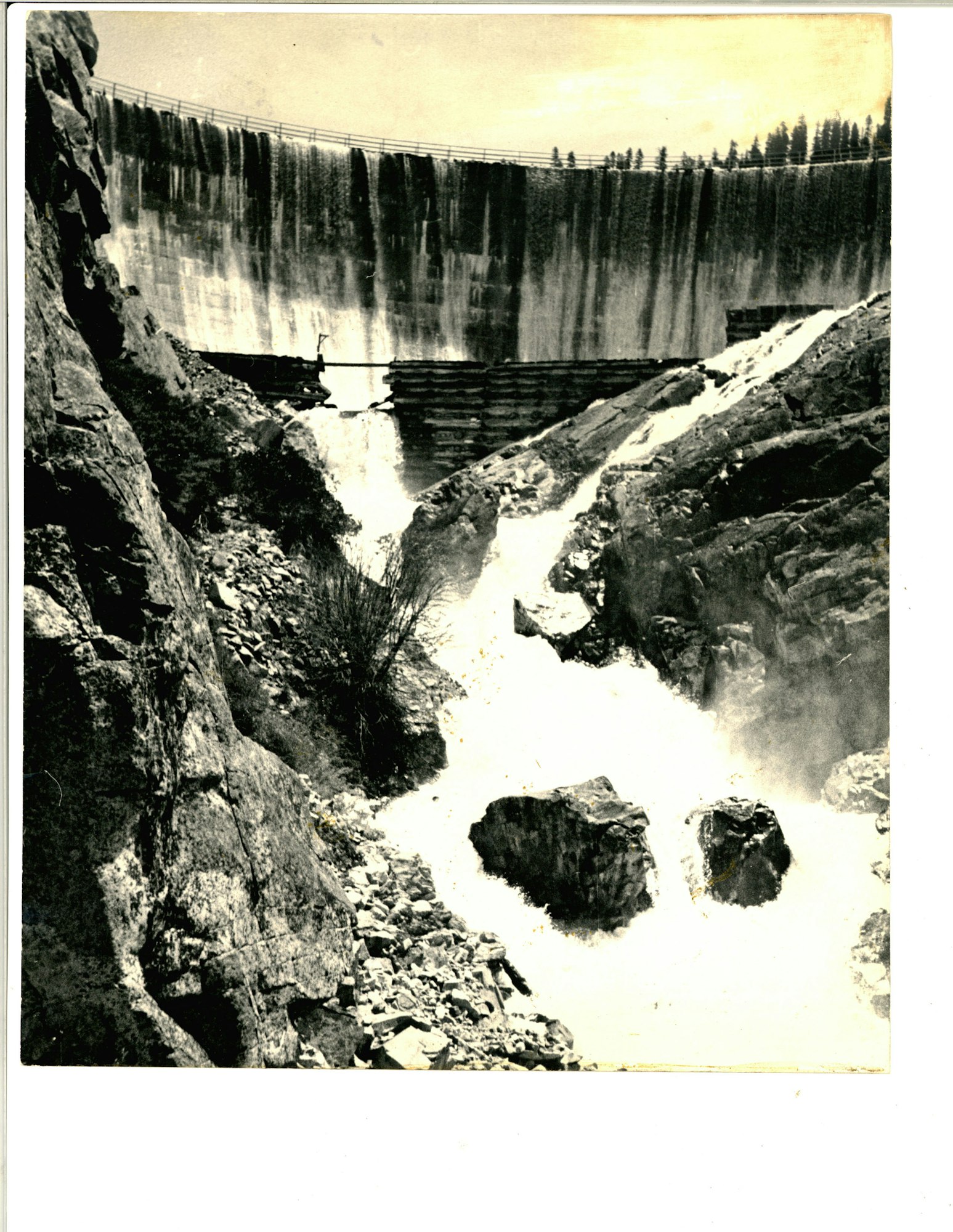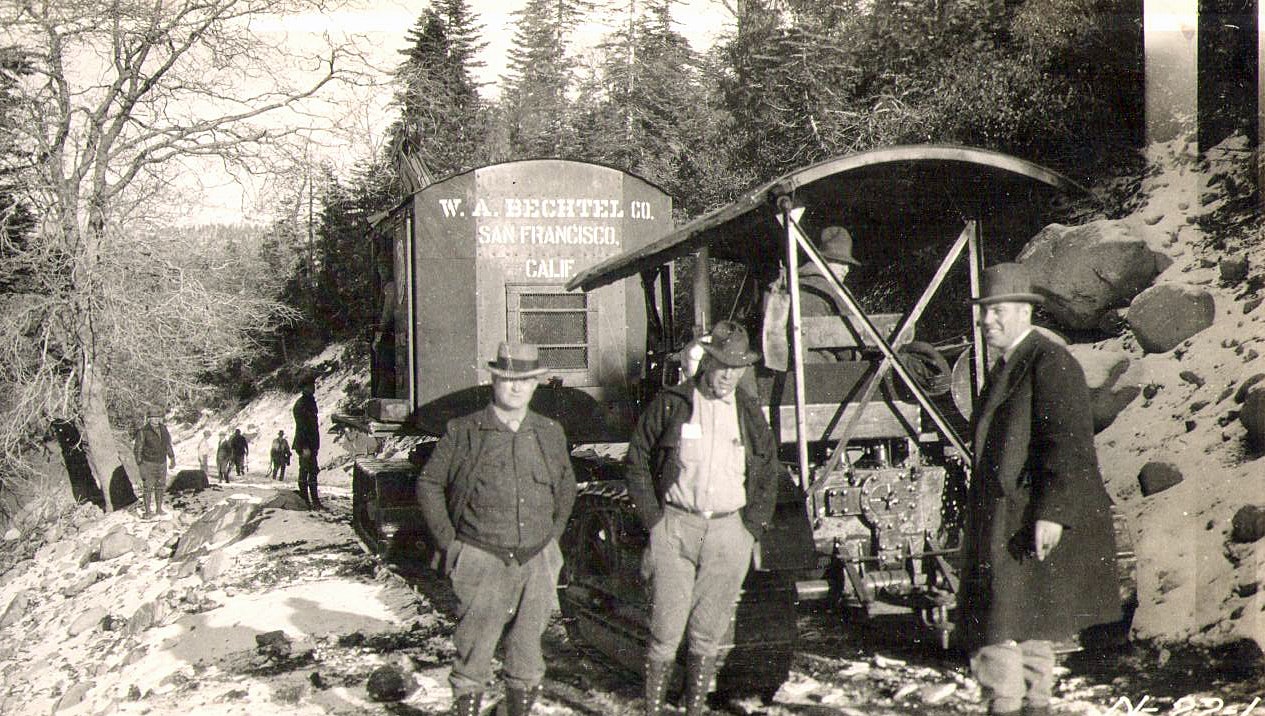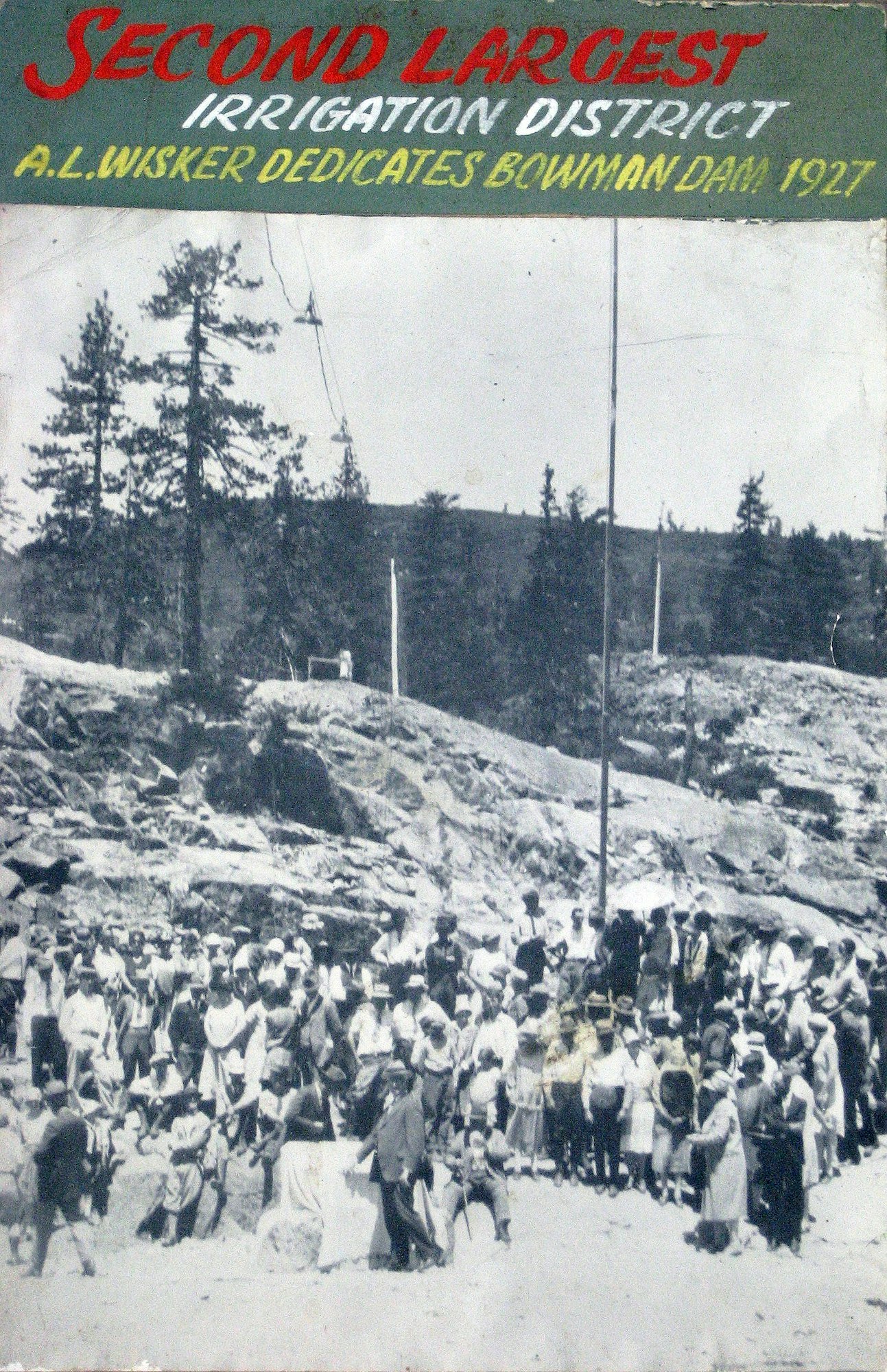Bowman Dam history
Excerpt from "Delivering Water for Life" (NID history book, published 2021)
Bowman Reservoir was built on Canyon Creek in 1872-1876 to supply hydraulic gold mines on the San Juan Ridge. The original builder, Hamilton Smith Jr., was described as “one of the best-known hydraulic engineers of the last generation,” by NID’s first District Engineer Fred Tibbetts in his 1922 final engineering report.

Bowman Dam is Raised

Bowman Dam (elevation 5,500 feet) is located about 40 miles northeast of Nevada City. The dam was California’s second rockfill dam, built in 1872 to supply water for hydraulic mining, including to Malakoff Diggins.
The dam’s upstream face was constructed with rock-filled timber cribs and sloped 60 degrees for the first 30 feet, and then 45 degrees on both the upstream and downstream faces.
Originally built at 86 feet high, when the dam was raised to 107 feet, it became the highest dam in the world between 1880 and 1888.
The dam held back water fed by Canyon Creek, a major tributary of the South Yuba River, in a reservoir that could hold about 21,350 acre-feet of water.
NID had plans to make the reservoir the primary water supply for the new District. Once purchased from Northern Water and Power Co., the dam needed to be upgraded and raised, an expensive move that the new directors entirely supported. Financing was made available through the $7.25 million bond, passed by voters in 1925.

The District hired Warren A. Bechtel, the founder of the today’s major global engineering firm with the credit of being one of six companies that built Hoover Dam in the early 1930s. Shortly after Bechtel, his three sons and brother joined to incorporate as the W.A. Bechtel Company in 1926, NID granted the new company its first major contract to construct the Bowman Dam.

The construction site was so remote, with snowpack lasting nearly six months out of a year, the Bechtel Company needed to establish a camp complete with a hospital, a hundred head of cattle and a slaughterhouse and storage facilities to sustain the crew for the winter.
The work was impressive; crews went to work to dismantle the existing timber infrastructure and replace it with a larger rock-filled dam that was porous yet also used firmly packed gravel and sand with an area of concrete to completely block the water.

When complete, Bowman stood at 176 feet high. It was the world’s second-largest rock-filled dam and had a capacity of 68,510 acre-feet of water.
PG&E notes the significance
In the January 1927 edition of the Pacific Service Magazine, published by PG&E, the editor noted the importance of Bowman Dam and Reservoir: “… the central and most important of the system is Bowman, situated on Canyon Creek, a tributary of the South Yuba.
Bowman is the chief of a smaller cluster of reservoirs lying under a ridge separating the Middle Yuba watershed from that of the South Yuba.…
As a matter of fact, Bowman reservoir itself was built more than a half a century ago and was long used as a source of water supply for the North Bloomfield hydraulic mines.
It has two dams, at separate openings, and the work now consists in replacing these old timber-crib relics of the ‘70s with modern structures.
The main dam now in process of construction is to be of rock-fill type, 176 feet in height and 680 feet along the crest, while the second dam, which will be used as a spillway, will be a concrete structure 117 feet in height and 430 feet in crest length.
This work will result in the development of a storage reservoir of 65,000 acre-feet estimated capacity.”
The PG&E editor also noted NID was “under obligation to deliver to our company 108,000 acre-feet of water from July 1 to March 1 of each year, from which the minimum annual revenue from power to the district will be $370,500.”
Bowman dedication draws hundreds

The rebuilt and enlarged Bowman Dam was dedicated by Kate “Ma” Church on June 29, 1927.
Ten years prior, she and her husband Munson “Bert” drove their cattle up to the green mountain meadows of the Sierra Nevada when their foothill pastures dried and turned brown during the summer. On this cattle drive, they envisioned a water system where the tumbling and abundant waters of the high mountains could be carried to ranches in the foothills.
The Churches were among a group of local residents who started a campaign to form an irrigation district. Thanks to their efforts, the Nevada Irrigation District was formed in 1921 by popular vote of the people.
On the summer day in 1927, during the Bowman dedication, Kate Church broke a bottle of clear mountain water against a plaque on the crest of the rebuilt Bowman Dam, hidden valves opened below and, as reported in The Union newspaper, “a great column of silvery water gushed forth the bed of Canyon Creek on its way to Lake Spaulding.”
These were the words she spoke: “To the completion of the work of our pioneers…the use of cities that are yet to be… to the tireless wheels of industry… to a richer rural life… to a greater measure of prosperity… to a higher standard of living… to a fuller realization of happiness… and to the maximum service of humanity.
The great works and the life-giving waters of Nevada Irrigation District are here irrevocably dedicated…
Here and now, I dedicate these waters to the service and constructive purposes of man in his pursuit of the useful arts of peace in this generation and in the generations to come.”
